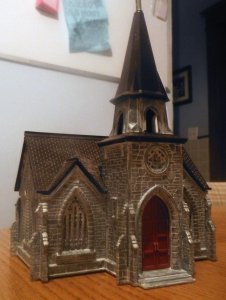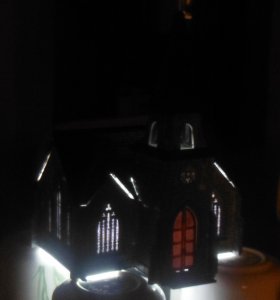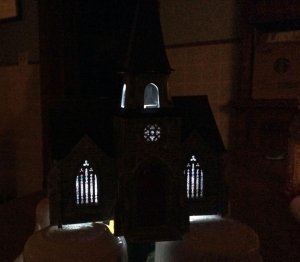paper-tiger
Member
Hi guys! I'm working on remodeling a church I got from eBay that someone had built up (not particularly well) and never bothered to paint. I spent quite a lot of time on it so far and really love the stained glass windows, so I think it would look amazing if it was lit, but my test showed that it is very, very not 'light-tight'. What do you guys use to 'caulk' the joints where light leaks through?


My test is just a flashlight underneath it and it's set up on some tea cups, that's why the bottom leaks so badly. The nifty diffusing in the steeple is because of a little square of translucent plastic right under the bell. The model doesn't fit together very tightly even with some fiddling. I'm not sure if that's because I ripped it apart and put it back together, or because that's just how it is. In any case, I need to find a literal stopgap if I'm going to light it nicely.
By the way, does anyone know what this model is called and who makes it?
Thanks!


My test is just a flashlight underneath it and it's set up on some tea cups, that's why the bottom leaks so badly. The nifty diffusing in the steeple is because of a little square of translucent plastic right under the bell. The model doesn't fit together very tightly even with some fiddling. I'm not sure if that's because I ripped it apart and put it back together, or because that's just how it is. In any case, I need to find a literal stopgap if I'm going to light it nicely.
By the way, does anyone know what this model is called and who makes it?
Thanks!



